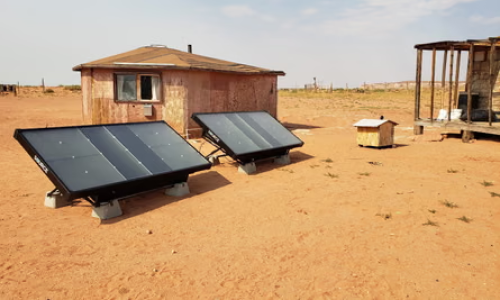In a groundbreaking advancement that could reshape the future of global water accessibility, researchers at Arizona State University, working alongside sustainability company SOURCE Global, have developed a revolutionary “solar hydropanel” capable of generating clean drinking water directly from the atmosphere — even in some of the driest regions on Earth.
This innovation comes at a time when water scarcity is one of the world’s most pressing challenges. According to global water studies, more than two billion people lack access to safe drinking water. The new hydropanel aims to offer a clean, sustainable, and decentralized solution for communities living far from reliable water sources.
Unlike traditional solar panels that convert sunlight into electricity, these hydropanels tap into an invisible but abundant resource — atmospheric moisture. Even the driest air contains some amount of water vapour. The hydropanel uses solar energy to heat up specially engineered materials that absorb this moisture. The captured vapour is then condensed into pure water, filtered, and mineralized to make it safe for drinking.
Each hydropanel can produce several litters of clean water per day. The quantity varies depending on humidity and sunlight levels, but the technology has demonstrated strong performance even in desert climates, such as those found in Arizona, northern Africa, and the Middle East.
One of the biggest strengths of this system is its independence from infrastructure. The hydropanel does not require electricity, fuel, or extensive maintenance. This makes it ideal for remote villages, mountain communities, and disaster-prone areas where access to clean water is limited or nonexistent.
SOURCE Global has already deployed these panels in rural communities that traditionally rely on distant wells, tanker deliveries, or seasonal rivers. In some areas, families that used to walk kilometers for water now receive clean drinking water from panels installed right outside their homes.
Beyond providing water, the hydropanel is also a step forward in tackling environmental concerns. It reduces dependence on plastic water bottles, fuel-powered water systems, and groundwater extraction. Its operation leaves no waste behind and is entirely powered by renewable energy.
Researchers believe that widespread adoption of hydropanels could significantly reduce pressure on overstretched water sources and help regions adapt to the growing impacts of climate change.
Countries facing chronic droughts, such as India, Kenya, Chile, and parts of Australia, have already shown interest in adopting this technology. Humanitarian organization are also exploring its use in refugee camps and post-disaster recovery missions.
Experts say this breakthrough could open a new chapter in water technology — one where access to safe drinking water is possible without pipes, pumps, or power grids.







